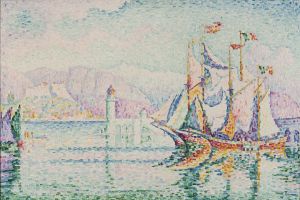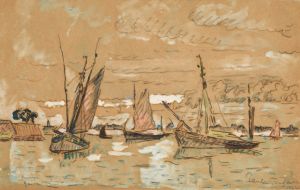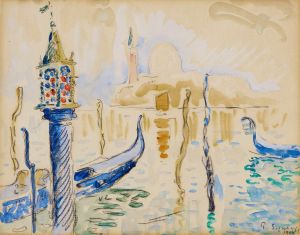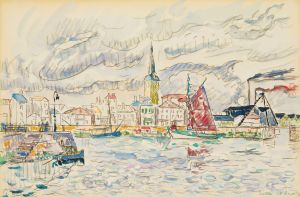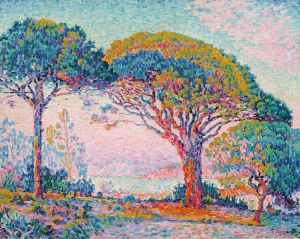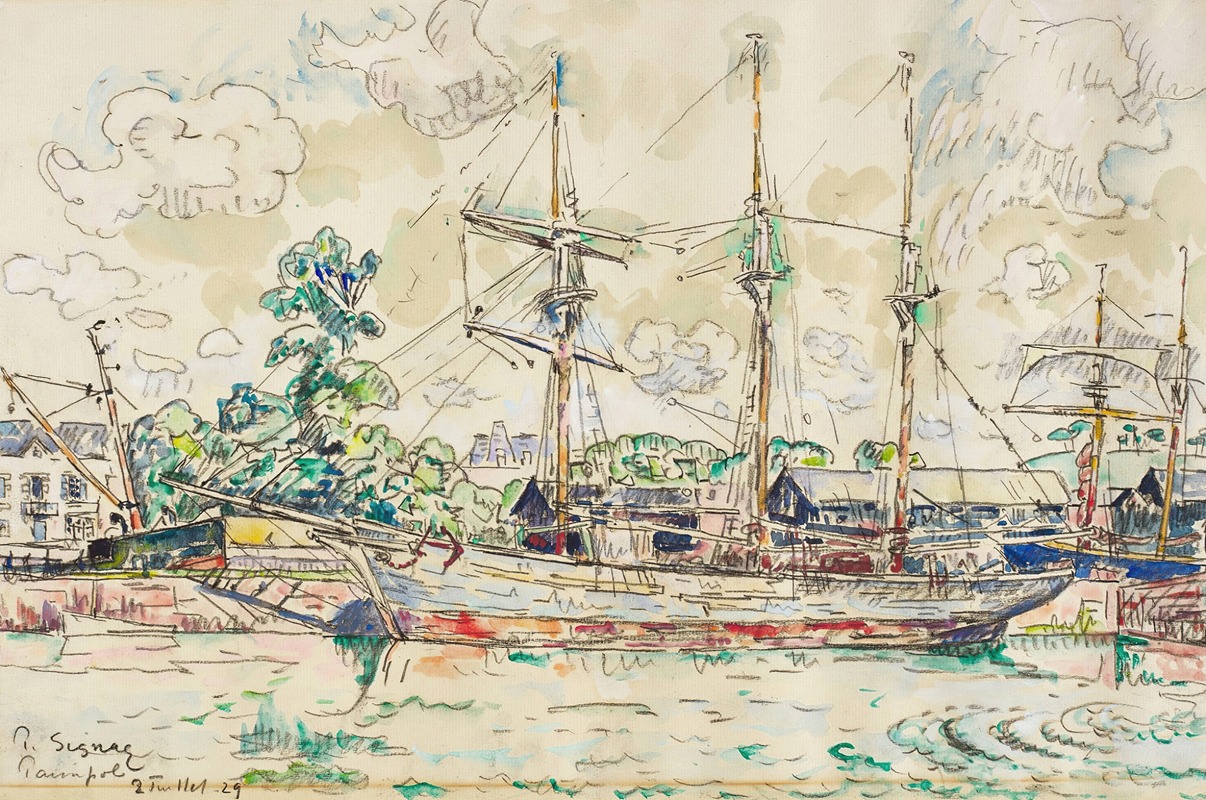
Paimpol
A hand-painted replica of Paul Signac’s masterpiece Paimpol, meticulously crafted by professional artists to capture the true essence of the original. Each piece is created with museum-quality canvas and rare mineral pigments, carefully painted by experienced artists with delicate brushstrokes and rich, layered colors to perfectly recreate the texture of the original artwork. Unlike machine-printed reproductions, this hand-painted version brings the painting to life, infused with the artist’s emotions and skill in every stroke. Whether for personal collection or home decoration, it instantly elevates the artistic atmosphere of any space.
Paul Signac's painting "Paimpol" is a notable work by the French Neo-Impressionist artist, who was a leading figure in the development of the Pointillist technique. Signac, born in 1863 in Paris, was initially influenced by the Impressionists but later became a key proponent of the Neo-Impressionist movement, which sought to bring a more scientific approach to the use of color and light in painting.
"Paimpol" was created during a period when Signac was deeply engaged with the principles of Pointillism, a technique developed by Georges Seurat. This method involves applying small, distinct dots of color to the canvas, which, when viewed from a distance, blend together to form a cohesive image. Signac was particularly interested in the optical effects of color and how different hues could be juxtaposed to enhance the vibrancy and luminosity of a painting.
The painting depicts the harbor of Paimpol, a coastal town in Brittany, France. This region was a popular subject for artists due to its picturesque landscapes and vibrant maritime life. Signac was drawn to the area for its natural beauty and the unique quality of light that the coastal environment offered. The composition of "Paimpol" reflects Signac's fascination with the sea and the bustling activity of the harbor, capturing the essence of the town's maritime culture.
In "Paimpol," Signac employs his signature Pointillist technique to render the scene with meticulous attention to detail. The painting is characterized by its bright, harmonious colors and the dynamic interplay of light and shadow. The use of small, precise brushstrokes creates a sense of movement and energy, conveying the lively atmosphere of the harbor. The water, sky, and boats are depicted with a vibrant palette, showcasing Signac's mastery of color theory and his ability to evoke mood and emotion through his art.
Signac's work, including "Paimpol," was influential in the evolution of modern art, as it challenged traditional approaches to painting and inspired future generations of artists to explore new techniques and ideas. His commitment to the scientific study of color and his innovative use of Pointillism contributed significantly to the development of the Neo-Impressionist movement.
Throughout his career, Signac remained dedicated to the exploration of color and light, and his paintings continue to be celebrated for their technical precision and aesthetic beauty. "Paimpol" is a testament to Signac's artistic vision and his ability to capture the essence of a place through his unique approach to painting. The work remains an important example of Neo-Impressionism and reflects the broader artistic trends of the late 19th and early 20th centuries.
Today, Paul Signac's paintings, including "Paimpol," are held in high regard and can be found in major art museums and collections around the world. His contributions to the art world have left a lasting legacy, influencing not only his contemporaries but also future movements in modern art.





